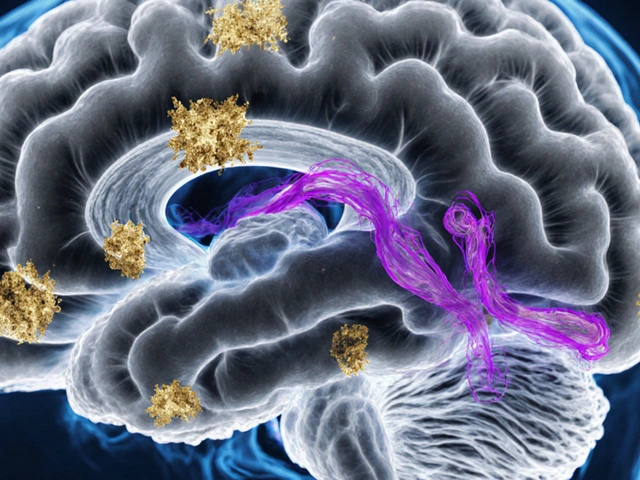Sometimes, the classic fix doesn’t work. Maybe you break out in hives from metronidazole. Maybe it wrecks your stomach, sends you running for the bathroom, makes booze off-limits, or just doesn’t do the trick against a stubborn bug. It’s not rare—ask around, and lots of folks have a metronidazole horror story tucked away. But here’s the thing: Bacterial and protozoal infections are stubborn, and they won’t wait while you duke it out with side effects. So, what’s actually waiting in pharmacy shelves when metronidazole isn’t an option? The world of modern medicine is way bigger than most people think—a whole roster of effective alternatives gets called up when Flagyl’s a no-go.
Why Metronidazole Is Sometimes Off the Table
First off, why would a doctor steer you clear of metronidazole? Allergic reactions aren’t just skin itchiness—they can mean breathing trouble, swelling, or even those scary ER runs. Another big reason: drug interactions. If you’ve got blood thinners or certain seizure meds in your routine, adding metronidazole can spell trouble. Liver issues also raise a red flag, since your body might not clear the drug out fast enough, causing it to pile up to risky levels.
Lots of folks simply can't handle the side effects. Nausea and metallic taste get all the press, but metronidazole can trigger headaches, confusion, numbness in limbs, or an intense sensitivity to alcohol—even in cough syrup! For some people, it doesn't even do its job: some parasites and bacteria are savvy enough to shrug it off. Fun fact: a 2023 review in the Journal of Infectious Diseases found that certain types of Giardia—the notorious stomach parasite—are developing growing resistance to this old standby.
Then there’s the problem of personal preference, which doctors do take seriously. If you’re pregnant, metronidazole is sometimes used, but with hesitation in the first trimester. It's not off the table, but it’s a decision weighed with extra care. So, if you, your kid, or your partner end up in one of these categories, what’s plan B?
Key Alternatives: Antibiotics and Antiparasitics That Step In
Doctors have several proven tools in their arsenal when Flagyl is a no-go. Here’s a rundown of the main options—their best uses, what makes them different, and real-world tips to watch for.
- Tinidazole: Probably the most Flagyl-like of Flagyl substitutes, tinidazole is super close chemically but is often easier on the stomach. It works against Giardia, amoebiasis, and trichomoniasis—the common offenders for protozoal infections. The best part? Sometimes, just one large dose does the job. It still shares metronidazole’s alcohol reaction, so skip that celebratory drink when you’re on it.
- Clindamycin: When the trouble is bacterial vaginosis or a stubborn dental infection, clindamycin can swoop in. It’s a powerhouse against some anaerobic bacteria, but you want to watch out for stomach upset and (rarely) serious diarrhea from C. difficile. Doctors often reserve this one for folks who really can't take metronidazole or when other drugs have failed.
- Nitazoxanide: If Giardia or Cryptosporidium are the enemy, especially in kids, nitazoxanide has a good reputation. It comes in a syrup for kids, which is a lifesaver when you’re wrangling a toddler, and the side effects are usually mild. It won’t work for everything, and it’s not always available everywhere, but when it does the trick, people swear by it.
- Secnidazole: This is a once-only oral treatment option for bacterial vaginosis and trichomoniasis. One dose and you’re done—pretty nice if you hate taking pills over days. Reports say it's better tolerated than metronidazole, though the alcohol warning still stands.
- Paromomycin: Usually reserved for amoebiasis (especially luminal amoebiasis after the more invasive forms are tackled), paromomycin is given because it isn’t absorbed—meaning fewer side effects in the rest of the body. It’s not as versatile as others, but it gets the job done when your gut’s the battlefield.
- Ceftriaxone: When a serious bacterial infection is spreading fast—think pelvic inflammatory disease, abdominal infections, or even severe dental abscesses—ceftriaxone is the go-to. It’s given as an injection and works fast. Although it won’t do anything for protozoa, it’s a safety net for some pretty ugly situations.
- Furazolidone: This one’s a little old-school and not used everywhere, but for giardiasis it remains on the list—especially in parts of the world where the usual meds aren’t available or resistance is a problem. If you’re traveling or dealing with an infection caught abroad, your doctor may mention this oddball option.
If you want a side-by-side comparison with even more details and tips, check this helpful list of alternatives to Flagyl—no need to dig through dozens of forums and studies yourself.

Special Scenarios: How Doctors Choose the Best Substitute
Here’s where things get a little more personal. Not all infections—or people—are created equal. Age, past health issues, pregnancy, where you live, and even what's happening in your gut microbiome can influence what medication is picked. Sometimes, the underlying problem isn’t even in your system—it’s your insurance formulary or your pharmacy’s inventory that actually makes the choice. But doctors try to match the alternative medication to your infection as closely as possible, aiming to knock out the bug, avoid nasty side effects, and dodge the alcohol problem if that’s a dealbreaker for you.
Let’s say you’re pregnant. Tinidazole is usually avoided in expecting moms, so doctors will think more about paromomycin or carefully used metronidazole, depending on timing. For kids, nitazoxanide and paromomycin get more playtime, since their safety profile is a bit friendlier and some come in liquid form, which is crucial if you’ve got a tiny patient battling giardia after a camping trip.
What if you’re dealing with bacterial vaginosis but can’t do metronidazole’s metallic taste? Secnidazole as a single dose seems like a minor miracle—no repeat dosing, no persistence. Or, for tough dental infections, your dentist might pick clindamycin if you’re allergic to penicillins as well.
Your immune system’s state also changes things—a healthy adult with a mild intestinal bug might ride things out with a shorter, lighter drug. But if you’re navigating chemotherapy, have HIV, or take high-dose steroids, doctors get aggressive fast to prevent a small infection from going nuclear.
And let’s talk about resistance. The more humans and animals take antibiotics or antiparasitics, the savvier the bugs get. That’s why you might hear about places in South America or parts of Asia where standard metronidazole just doesn’t cut it for giardia anymore. Doctors keep up with the latest maps and bulletins (and sometimes rely on patient’s travel histories as a detective tool) before they prescribe. You might walk in with a simple infection, but walk out treated as if you’d just returned from the Amazon.
Tips for Safe Use and Preventing Future Infections
There’s something unglamorous but true here: you can have the best medication around and still blow it by not following directions. Alternative antibiotics and antiparasitics are only as good as the care you take while using them. So, if you score a prescription for tinidazole or nitazoxanide, finish the course—even if you feel fine on day two. Letting up early isn’t just bad for you; it makes these bugs stronger for the next unlucky person.
Alcohol is a repeat villain with metronidazole, tinidazole, and secnidazole. Avoid it completely as long as the drug is in your system. Even cough or cold remedies can sneak alcohol in there, so double-check labels. The internet is full of stories—some funny, some not—about ignoring this rule and ending up very, very sorry.
If you’re prone to side effects, work with your doctor on timing. For instance, taking some of these meds with food can help with queasiness. On the flip side, some (like paromomycin) work better on an empty stomach. Don’t guess—ask your pharmacist or prescriber.
Don’t share these medications. The one-size-fits-all approach doesn’t work here because the infection you have might not even need an antibiotic, or it might need something totally different based on what’s actually going on in your system. Self-diagnosis, especially with leftover meds, just isn’t safe.
Finally, think about prevention. Good handwashing knocks out so many bacterial and protozoal infections, you’d be amazed. When cooking or camping, filter water and keep raw foods away from cooked foods. If you’re traveling, that bottled water habit can save you a lot of grief. Nora actually learned the hard way during a backpacking trip in Peru—it wasn’t the hiking, but the fresh salsa from a street market that landed us both in the doctor’s office. Lesson learned!
And, for those with recurring infections—work with your doctor to identify any underlying health issues, check your hygiene habits, and don’t forget to get your family (and sometimes pets!) treated if multiple people are picking up parasites over and over. It’s a group effort sometimes.
Relying on metronidazole alone is like trying to fix every home problem with a single wrench. Medicine has moved on, and there are great options for nearly every scenario. Ask questions, know how—and why—your doctor picks a substitute, and use these treatments wisely. Your body (and your long-suffering stomach) will thank you.







May 23, 2025 AT 01:27
Metronidazole's side effects remind us that every drug is a trade off. You feel the nausea you hate and still want cure. The body balances benefit and burden in quiet ways. Sometimes the alternative feels like a gamble but still worth a try. Thinking about tinidazole or clindamycin feels like a philosophical choice about health. I wonder how much we accept discomfort for a quick fix. The gut knows when you push it too far. The mind has to stay calm and trust the doctor. In the end the decision is yours to own.